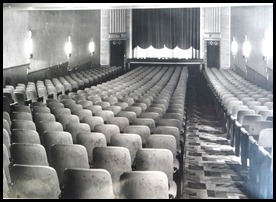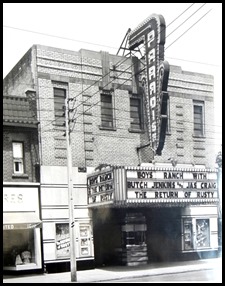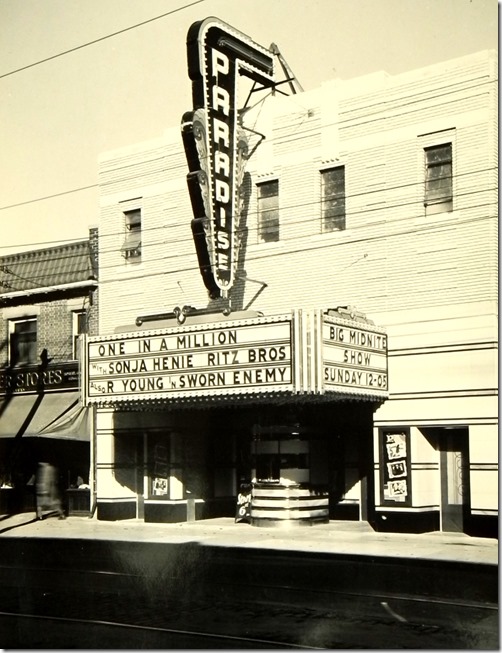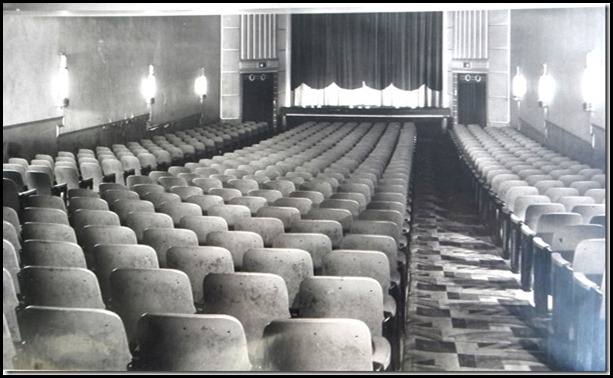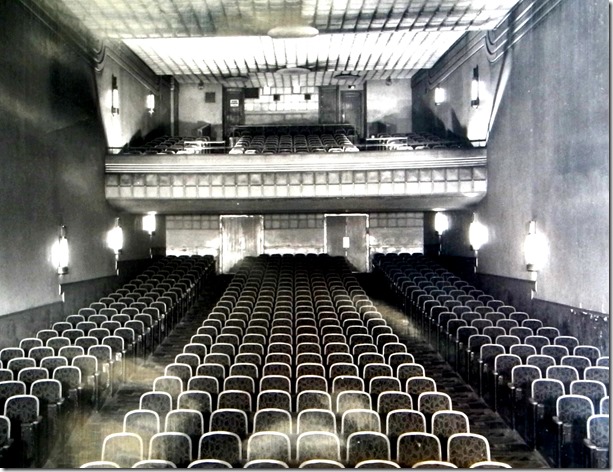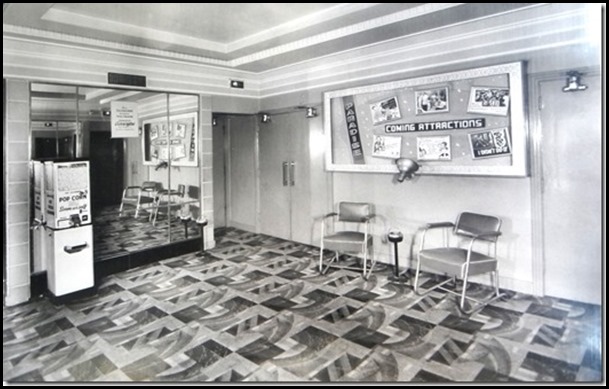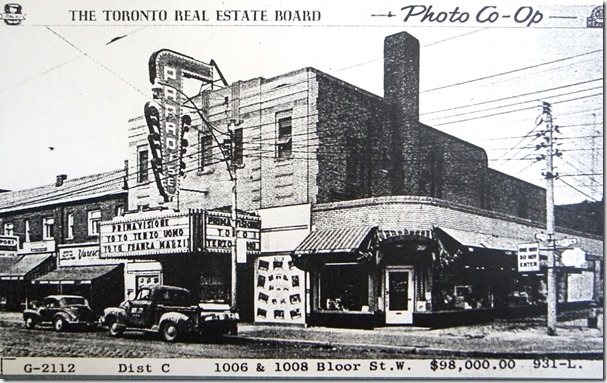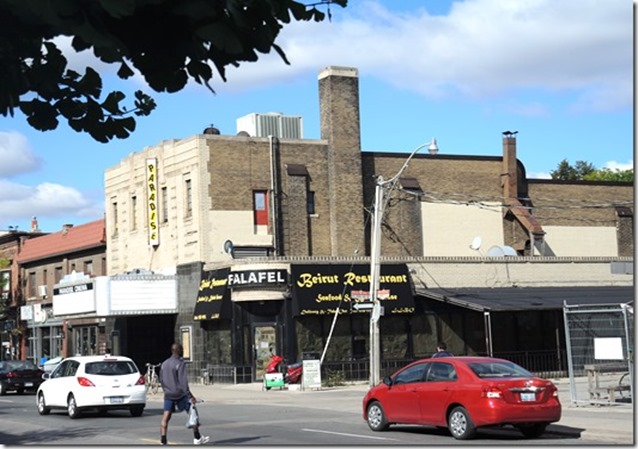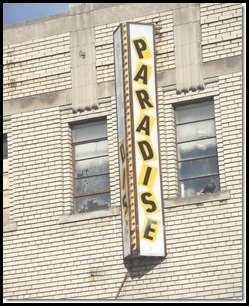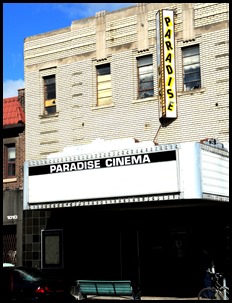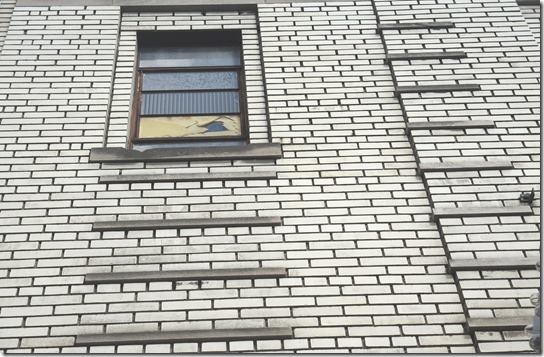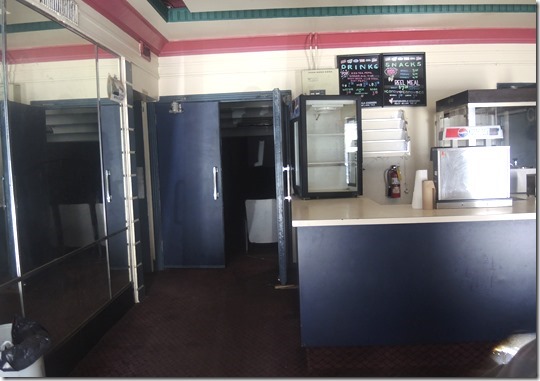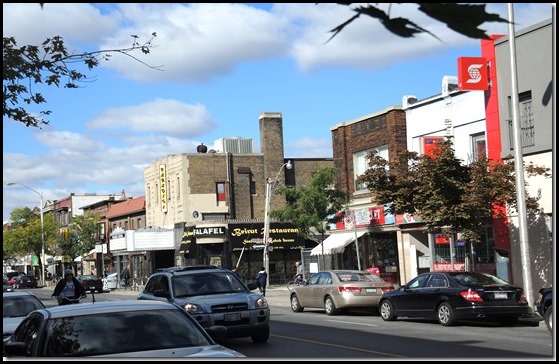
Borrowing titles from the 17th-century poet John Milton, “Paradise Lost,” is a more frequent occurrence than “Paradise Regained.” However, in Toronto this week (December 1-7, 2019) Paradise was indeed regained when the Paradise Theatre on Bloor Street West reopened after 13 years of sitting empty and neglected. The photo on the left depicts the theatre’s auditorium in the 1940s.
Thanks to the effort of Moray Tawse, this grand old theatre from the era of the Golden Age of movies houses, has been carefully restored. Mr. Tawse purchased the derelict building in 2013, and despite many setbacks and numerous seemingly insurmountable difficulties, the movie house officially reopened this week. In earlier decades, it had been operated exclusively for screening films, but it is now a multi-purpose cultural centre.
In its new life it has an Italian restaurant on the first floor and a balcony where the seats fold back to create a space that is able to accommodate different types of events. The seating capacity of the auditorium has been reduced from over 600 to 183 plush leather seats, in an auditorium that has the most up-to-date theatre technology.
The newly reopened Paradise provides an opportunity to watch a film on a large screen, a unique experience that cannot be duplicated by smaller formats in the privacy of your home. On a large screen, the action is viewed by everyone at the same moment, meaning that all who are present share the tears and pain as well as the joys and laughter along with the actors on the screen and also with those seated around them. Similarly, a comedy film is much funnier when viewed in a theatre with many people, as opposed to when the theatre is nearly empty?
It is the human connection, the interaction with others, made possible by the large screen, that enables this unique experience to occur. It is something that is rare today, as social media has reduced our connection to others to the size of the small screens on IPhones and IPads.
Treat yourself. Indulge in a shared experience that leaves you with a memory that will last a life time. Those of us who grew up with the large silver screens remember forever the time they watched films such as “Gone with the Wind” or “Quo Vadis” at our local theatres or downtown movie palaces. Are you of an age to remember the Saturday afternoon matinees and how you yelled and screamed with the other kids to encourage the cowboys with the white hats and booed at those with the black hats? Films watched on small screens are easily forgotten. It is the shared moment in life, whether with family, lover, pets or watching a film, that last forever (end of the commercial part of this post).
For those who are interested in the history of the Paradise Theatre, I have republished information that I provided in a post on my blog on January 12, 2014. However, there are new photos included from the Ontario Archives that were not in that post so they have not previously appeared on the internet.
During the summer of 2014, in my quest to locate and photograph Toronto’s old local theatres, none of the discoveries surprised and pleased me more than the sight of the Paradise Theatre. Located at 1008 Bloor Street West, it is on the northwest corner of Bloor and Westmoreland Avenue. However, I must admit that my pleasure slowly became tinged with a hint of sadness, as its impressive marquee was blank, devoid of the names of films, and the spaces where posters had once advertised films were empty or contained faded posters. One of the spaces had graffiti defacing it. The theatre was akin to a grand old lady whose glory days had vanished and was now a relic from the past.
Despite these thoughts, I must confess I was gladdened by the realization that at least the theatre had survived, and despite the passing of the many decades since it opened, its façade of glazed bricks still sparkled in the afternoon sun. Its marquee may have been empty, but it appeared reasonably well preserved and as attractive as when it was first installed. In my opinion, the Paradise is an architectural gem.
The site where it exists has a long history in the story of Toronto’s local theatres. The first theatre built on this site at 1008 Bloor Street was named the Kitchener. It opened its doors to screen silent movies in 1909, in the days prior to the First World War. The cost of constructing the theatre was $3000. To build the Paradise, the old Kitchener Theatre was gutted, very little of it being retained.
The present-day cinema opened in 1937, its architect being the Lithuanian-born Benjamin Brown, one of the city’s most famous architects. He had previously designed the Reading Building in 1925, the Tower Building in 1927, and Balfour Building in 1930, all located on Spadina Avenue. Brown also was the architect of the infamous Victory Theatre. Benjamin Brown chose the Art Deco style for the Paradise Theatre. The tall rectangular windows on the second floor and the narrow rows of raised bricks create the impression of extra height. Its cornice is relatively unadorned, with a raised centre section in the central position, typical of many Art Deco buildings. When it opened in 1937, its auditorium contained a small stage, with dressing rooms to accommodate actors when live performances were offered. It was an intimate theatre, containing a small lobby and less than 500 seats in its auditorium, including the balcony.
The theatre changed ownership several times during the decades ahead, but except for a period in the 1980s, when it screened soft porno and was named Eve’s Paradise, it always retained its original name. It screened Italian films in the 1960s. In the 1990s it was a repertoire theatre, part of the Festival chain.
By the early years of the 21st century, it had become somewhat shabby, its projectors having insufficient power to properly illuminate the film-prints, and the sound system was in poor shape. It closed in 2006, but in 2007 was listed as a Heritage Property. Unfortunately, because the laws are very lax, this did not ensure that it would not be demolished.
However, this story has a happy ending. The Paradise Theatre was purchased by Moray Tawse, who plans to restore it to its original glory. It will become an arts centre and community theatre, a true addition to Toronto’s cultural scene.
To view plans for the redevelopment of the Paradise Theatre, google: www.insidetoronto.com
This photo of the Paradise Theatre was likely taken in 1937, the year it opened, as the film starring Sonja Henie was released in 1936. Ontario Archives, 1150 N-147.
Undated photo of the auditorium of the Paradise. Photo from Ontario Archives.
Interior view of the auditorium, looking southward from the stage. Toronto Archives, Series 1278, File 127, Item 2306.
Lobby of the Paradise. Photo from the Ontario Archives.
Toronto Real Estate Board ad for the theatre. It was screening Italian films at the time so it was likely in the 1980s..
In 1943, this letter was sent to the Motion Picture Censorship and Theatre Inspection Branch. Letter now in the Ontario Archives.
View of the Paradise on the northwest coroner of Bloor and Westmoreland during the summer of 2014.
Marquee and the sign of the Paradise (2014).
Brick designs on the facade of the theatre.
The lobby and entrance door to the auditorium of the Paradise in 2014.
Gazing west along the busy section of Bloor Street West, where the Paradise is located.
